The default tendency in a Windows computer is to automatically scan for nearby Wi-Fi networks and bring them up on the network screen. This makes it really easy for users to connect to their Home or Office Wi-Fi network.
If your computer is not showing Wi-Fi Networks, the problem could be due to change in Network Settings, outdated network drivers, change in network settings and other reasons.
What to do If Windows is not showing Wi-Fi networks?
When a Windows computer is not showing Wi-Fi networks, it does not necessarily provide any error message or a reason for this failure. Hence, you will have to manually go through the following troubleshooting steps.
1. Disable Airplane Mode
If you have been travelling, make sure that Airplane mode is not enabled on your device. If your device is in Airplane mode, you shoud see an Airplane Icon in the taskbar (bottom-right corner).
1. Click on the Airplane icon in the taskbar and then click on the Airplane Mode tab to disable Airplane mode on your device.
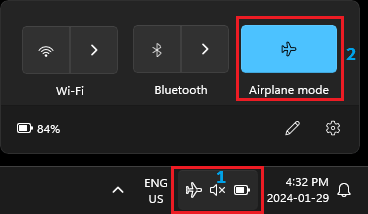
2. Next, go to Settings > Network and Internet and make sure the toggle next to Airplane mode is set to OFF position.
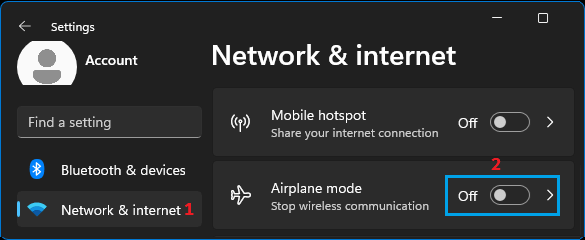
You should now find your computer displaying all available Wi-Fi networks and you may also find it automatically connecting to your Wi-Fi network.
2. Update Network Adapter Driver
Follow the steps below to manually update the drivers for the Network Adapter installed on your computer.
1. Right click on the Start button and click on Device Manager.
2. On Device Manger Screen, expand Network Adapters entry > right-click on the Wi-Fi Adapter and click on Update Driver Software option.
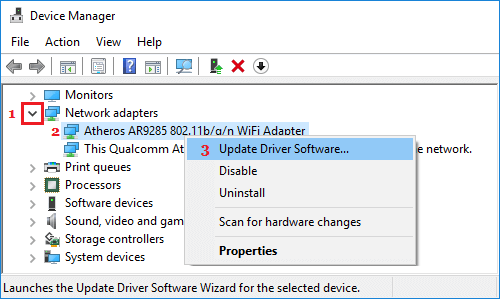
Tip: If you see multiple entries, look for something that has Network, 802.11b or WiFi in it.
3. On the next screen, select Search automatically for updated driver software option and follow the instructions to install updated driver software (if available).
3. Restart Network Adapter
Restarting the Network Adpater might help in fixing this problem.
1. Right Click on the Start button and click on Device Manager.
2. On Device Manger Screen, expand Network Adapters entry > right-click on your Wireless Adapter and select Disable Device option.
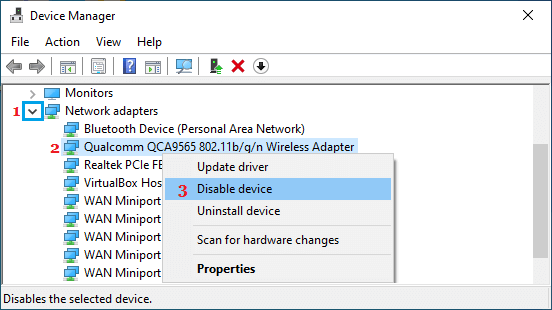
3. After 30 seconds, right-click on Wireless Adapter again and this time select Enable Device option.
Restart the computer and check to see if your computer is now displaying Wi-Fi networks.
4. Run Network Troubleshooter
Windows comes with a built-in Network Troubleshooter, that can be used to find and fix network connectivity problems.
1. Go to Settings > System > scroll down in the right-pane and click on Troubleshoot.
2. On the next screen, scroll down and click on Other troubleshooters.
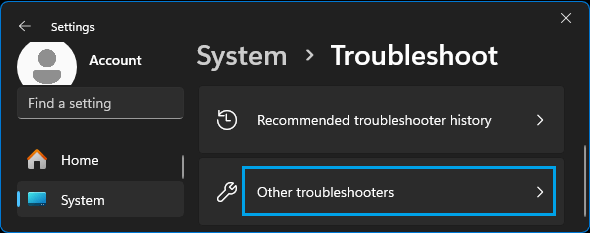
3. On the next screen, click on the Run button located in “Network & Internet” tab.
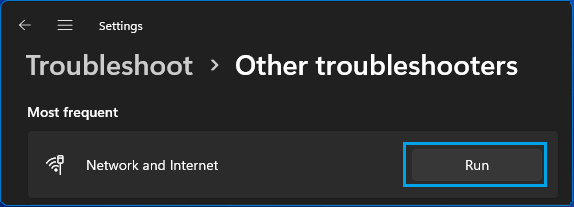
4. Follow onscreen instructions as the troubleshooter tries to find and fix network connectivity problems on your device.
5. Power Flush Modem/Router
Most network connectivity problems can be fixed by restarting the Modem/Router unit.
1. Disconnect the Modem/Router from its Power supply source.
2. Wait for 60 seconds and re-connect Modem/Router to its Power Supply source.
Wait for all the lights on the Modem/Router to light up and see if your computer is displaying Wi-Fi networks.
6. Reset Network Settings
As mentioned above, the problem could be due to a change or corruption in Network Settings.
1. Go to Settings > Network & Internet > Advanced Network Settings.
2. On the next screen, click on Network Reset tab, located under “More Settings” section.
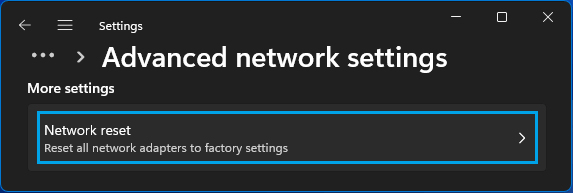
3. On the next screen, click on Reset Now button.
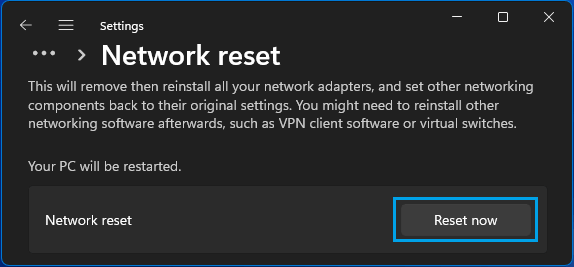
4. On the confirmation pop-up, select the Yes option to confirm.
After the reset process is completed, click on the Wi-Fi icon in the taskbar and see if your computer is now displaying Wi-Fi networks.